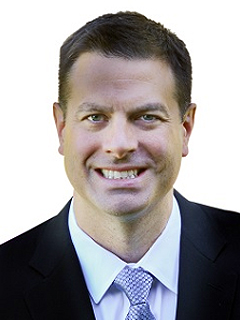The future of HR: From flux to flow
How Pathfinders are grappling with the current challenges faced by the function and are moving toward 2025 with purpose

In this year’s research1, we have identified a number of HR functions that are preparing for the future by taking strategy to the next level, integrating digital technology and relational analytics, building Talent Marketplaces, implementing digital transformation, putting purpose and well-being first, and focusing on environmental, social, and governance (ESG).
We also interviewed HR Pathfinders who are putting bold people strategies at the heart of their decisions and finding themselves reaping a competitive advantage amid the “Great Reconsideration.” Today’s Pathfinders are also recognizing the importance of what we call flow—HR in the flow; careers in the flow; and people in the flow. Flow for our Pathfinders is about embracing change—testing, learning, and deploying answers to challenges. This flow is grounded in analytics and used to inform other parts of their organization.
Come explore what 12 Pathfinders are doing as they move from the flux of grappling with tangible problems to flow.
Listen to the future of HR podcast
1The future of HR: From flux to flow, 11/2022, KPMG

The Future of HR: From flux to flow
Dive into our thinking:
Executive summary | The future of HR: From flux to flow
Download PDFThe future of HR: From flux to flow infographic
Download PDFBlogs
Popular category topics
HR Pathfinders:
Pathfinders were first identified in our 2020 research, in which we found 10 percent of organizations leading their peers on adding strategic value; and integrating the HR function into the wider business.
Digital transformation addresses the talent imperative of attracting, retaining, and growing top talent through exceptional and individualized workforce experiences. To implement this new, human-centered design and experience focus, HR must shift how they think about their operating model, capabilities, and technology investments.
John Doel
Principal, Human Capital Advisory, KPMG LLP
According to the 300 HR leaders surveyed, they ranked these are their top areas of focus for the next three years.
57%
Understanding how the size, shape, skills, and organization of the workforce needs to change to meet future needs three years out—57 percent; as well as improving the employee experience across enterprise processes—57 percent
53%
Improving the mental health and well-being of the workforce—53 percent
46%
Building a Talent Marketplace, which allows for the matching of skills to tasks as well as people to jobs—46 percent
39%
Automating HR service delivery—39 percent, and delivering digital technology into HR beyond the core HR system of record—39 percent
36%
Delivering predictive insight and business value from workforce analytics—36 percent
32%
Ensuring the workforce contributes to ESG topics, including any commitments to net-zero and diversity and inclusion targets—32 percent
Explore more
Popular category topics
Meet our team


Subscribe to Human Capital Real Insights: Delivering in today's world of work
Subscribe to Human Capital Real Insights for access to research, analysis, and events to help you gain strategic insight and position your enterprise for a competitive advantage.




